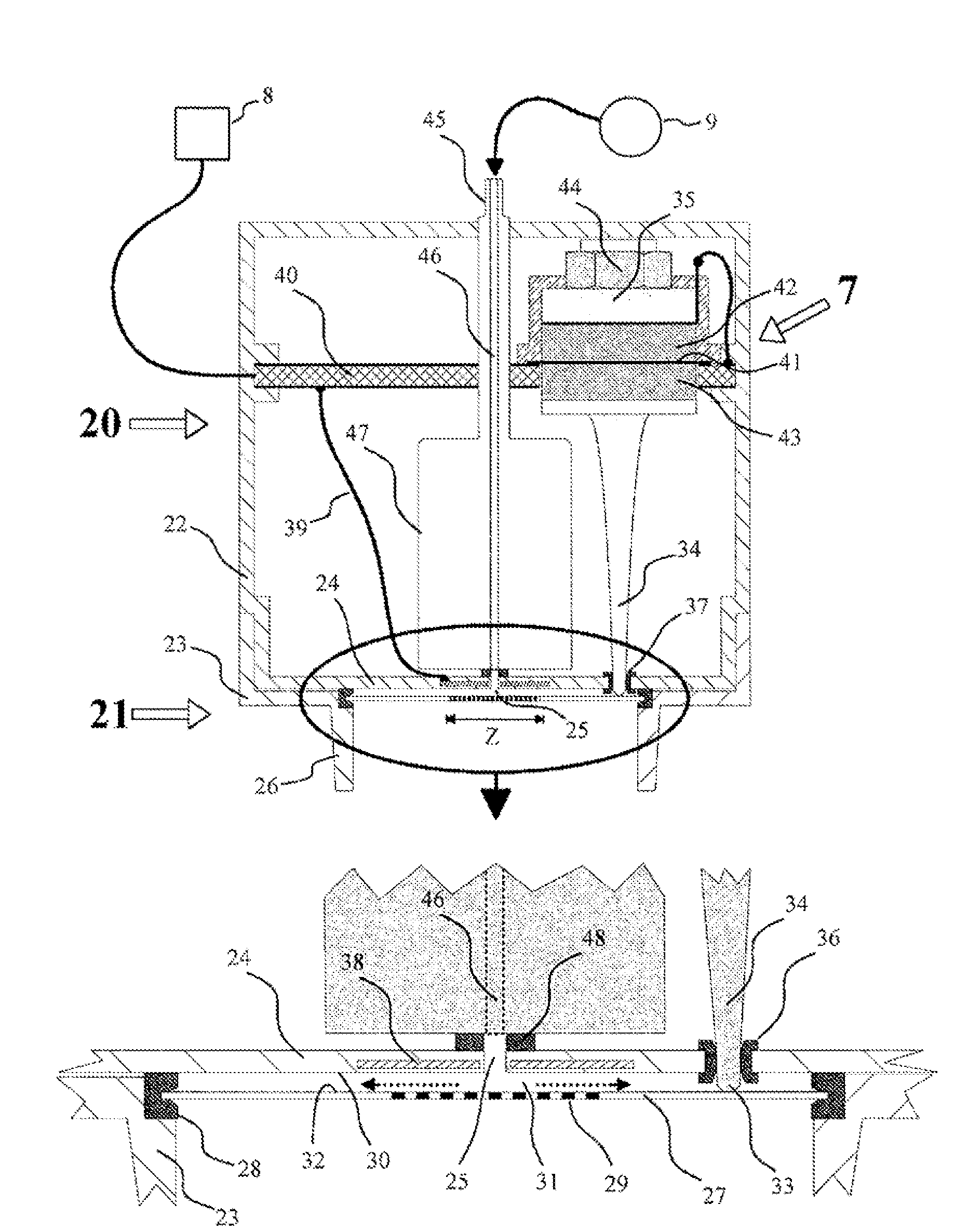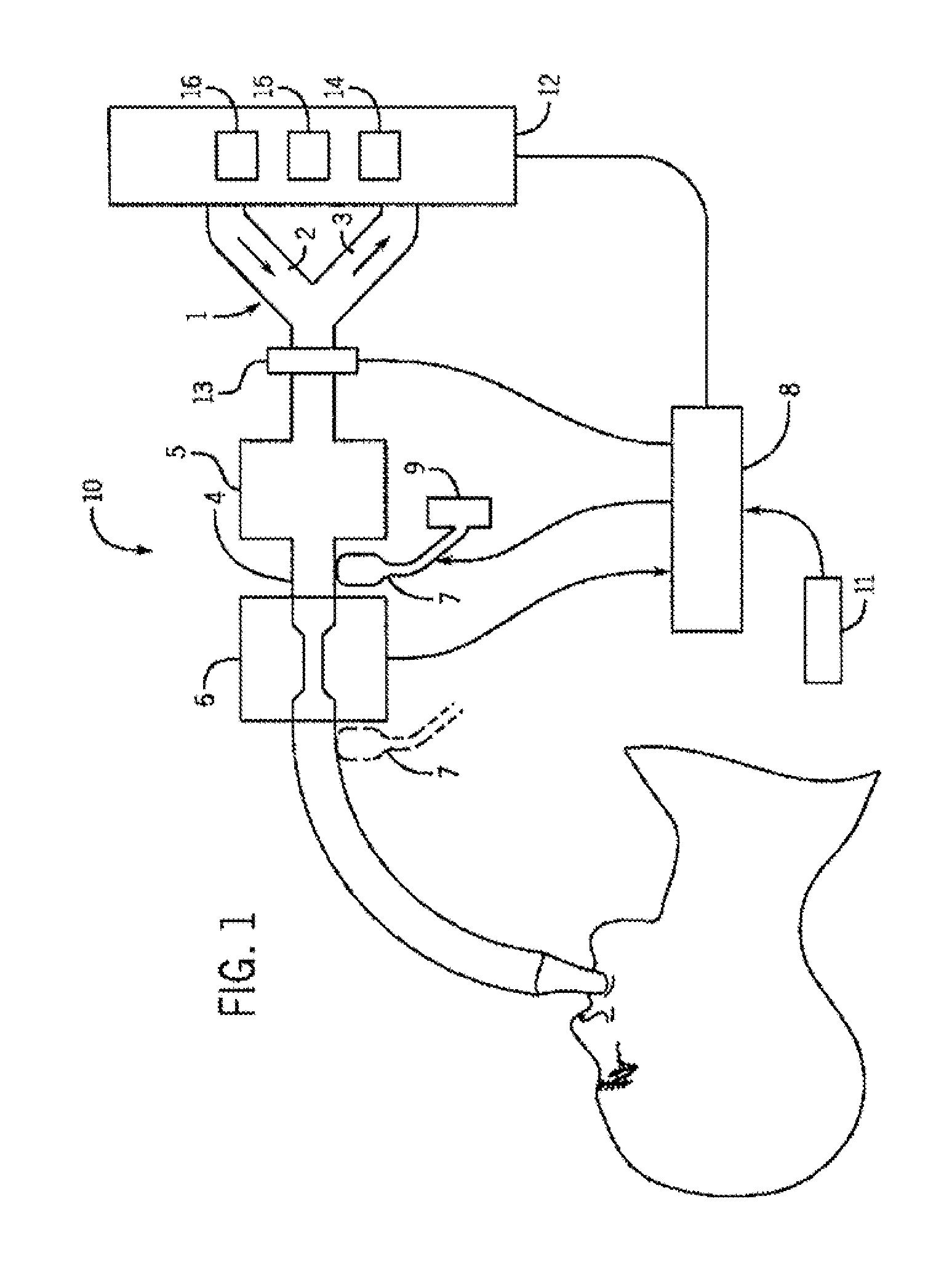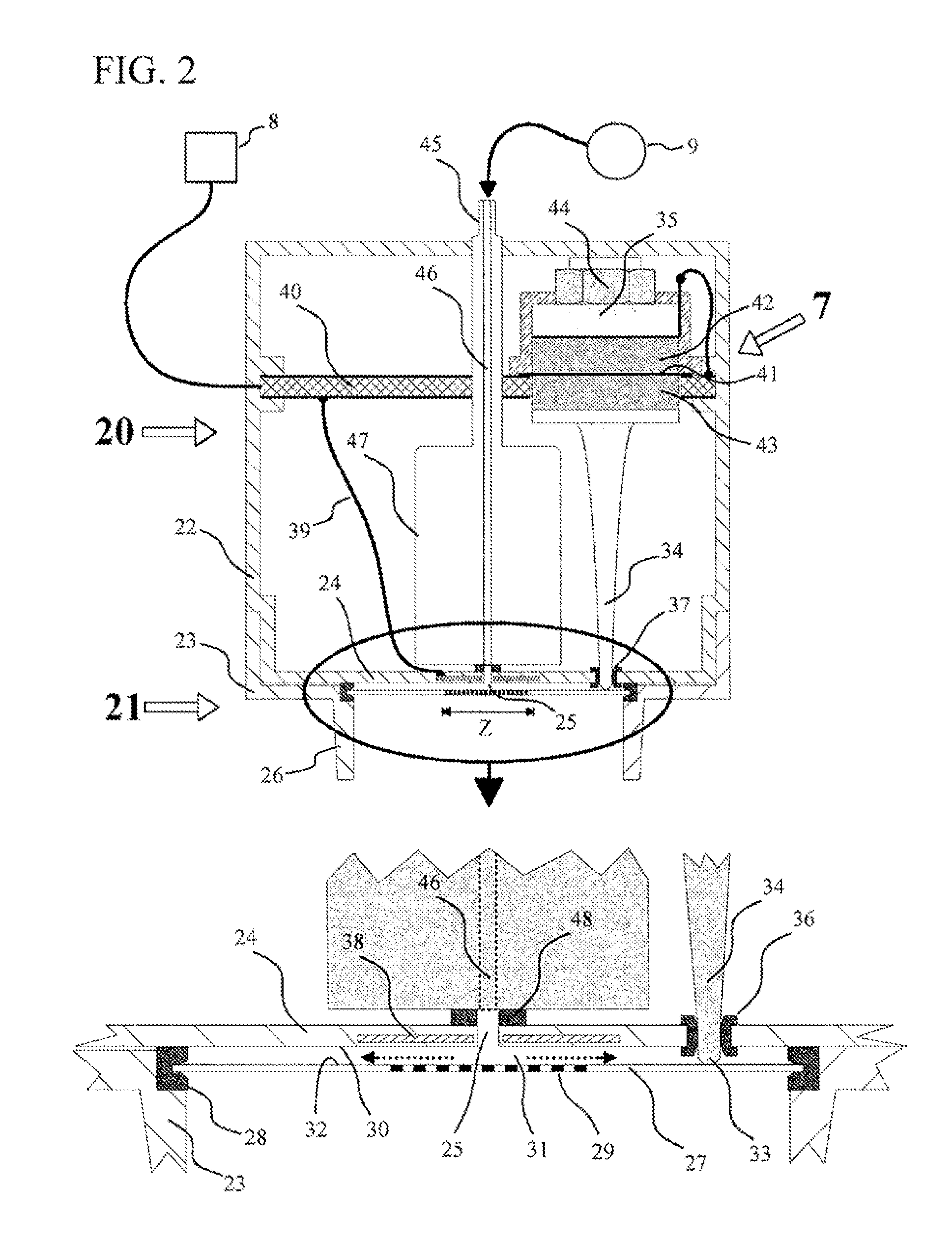Apparatus, system and method for administering an anesthetic agent for a subject breathing
a technology of anesthetic agent and subject breathing, applied in the field of apparatus, a system and a method of administering anesthetic agent for a subject breathing, can solve the problems of requiring a lot of infrastructure, requiring a lot of space, and producing a vapor continuously
- Summary
- Abstract
- Description
- Claims
- Application Information
AI Technical Summary
Benefits of technology
Problems solved by technology
Method used
Image
Examples
Embodiment Construction
[0025]FIG. 1 shows an anesthesia delivery system 10 comprising a breathing connector 1, such as Y-piece, having three branches. The first branch is an inhalation tube 2 for delivery of inhaled gases during an inspiration, the second branch is an exhalation tube 3 carrying expired gas during an expiration and the third branch is an airway tube 4 carrying during the inspiration the inhaled gas to and during the expiration the expired gas from a subject. Also the anesthesia delivery system 10 may comprise an anesthetic agent adsorber unit 5, such as a reflector, for adsorbing an anesthetic agent usually when a subject is exhaling and for releasing this agent into inspiratory breathing air. Further the anesthesia delivery system 10 comprises a gas analyzing apparatus 6 and an anesthetic agent dosing unit 7, which both are assembled into the airway tube 4. The gas analyzing apparatus 6, such as an infrared gas analyzer, is for measuring a concentration of at least one component of a gas ...
PUM
 Login to View More
Login to View More Abstract
Description
Claims
Application Information
 Login to View More
Login to View More - R&D
- Intellectual Property
- Life Sciences
- Materials
- Tech Scout
- Unparalleled Data Quality
- Higher Quality Content
- 60% Fewer Hallucinations
Browse by: Latest US Patents, China's latest patents, Technical Efficacy Thesaurus, Application Domain, Technology Topic, Popular Technical Reports.
© 2025 PatSnap. All rights reserved.Legal|Privacy policy|Modern Slavery Act Transparency Statement|Sitemap|About US| Contact US: help@patsnap.com



